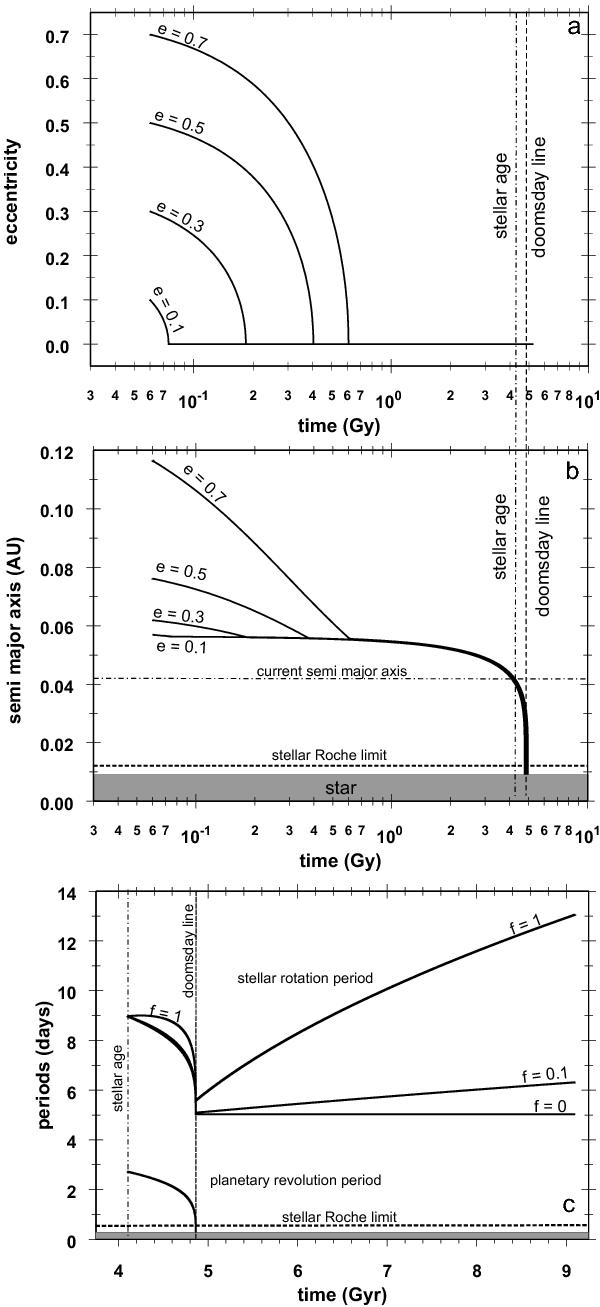Fig. 8

a) Change in eccentricity and b) semi-major axis in the past starting at a), e) values which yield the observed values at the stellar age of 4.1 Gyr (dashed-dotted line) for Q∗/k2 ∗ = 107 and Qp/k2p = 105. The orbit is rapidly circularized within 600 Myr for any start value e0. b) The semi-major axis is decreasing until circularization and synchronization with the planetary rotation has been achieved. The current observed value of the orbital radius decays for Q∗/k2 ∗ = 107 within the next 800 Myr (dashed “doomsday line”) line when the planet enters the stellar Roche zone. The grey region marks the radius extension of the star, the horizontal dashed line marks the extent of the stellar Roche zone. c) The stellar rotation is spun-up until the planet gets lost in the stellar Roche zone. The tidal spin-up compensates and dominates the loss of angular momentum and slow-down of stellar rotation. After the loss of the planet, tidal friction has ceased and the stellar rotation is again slowed-down by the loss of angular momentum caused by magnetic braking. The extent of the slow-down of F-stars is modeled by different parameters f (see text) where f = 1 is for G-stars (not appropriate here, but shown for comparison), f = 0.1 is assumed for F-stars and f = 0 is neglecting the stellar angular momentum loss by magnetic braking.
Current usage metrics show cumulative count of Article Views (full-text article views including HTML views, PDF and ePub downloads, according to the available data) and Abstracts Views on Vision4Press platform.
Data correspond to usage on the plateform after 2015. The current usage metrics is available 48-96 hours after online publication and is updated daily on week days.
Initial download of the metrics may take a while.


